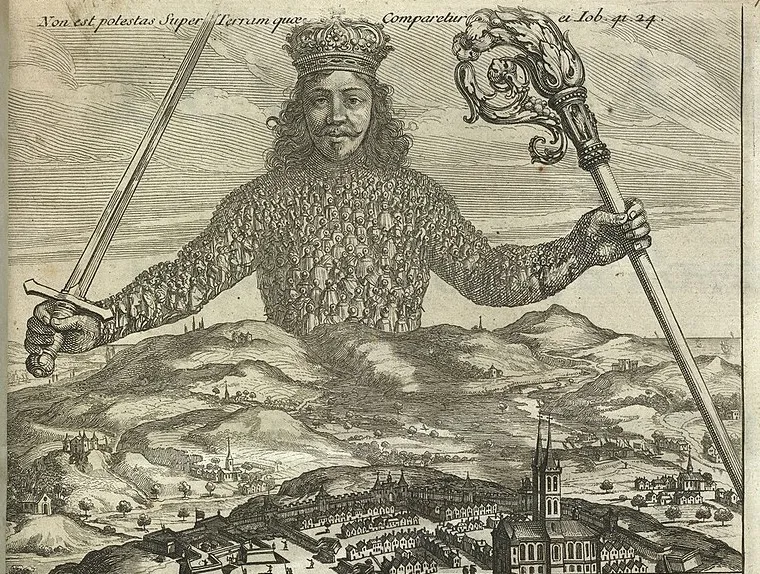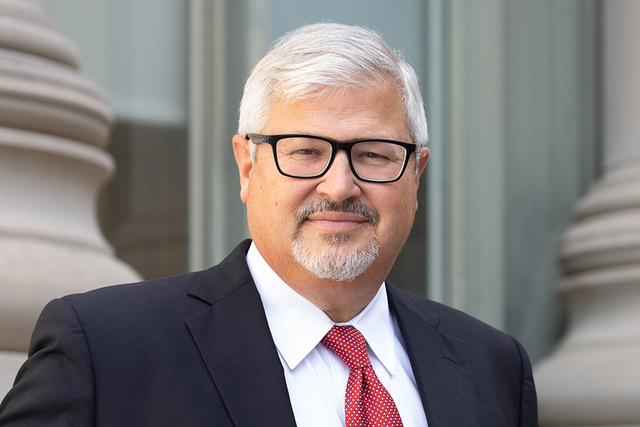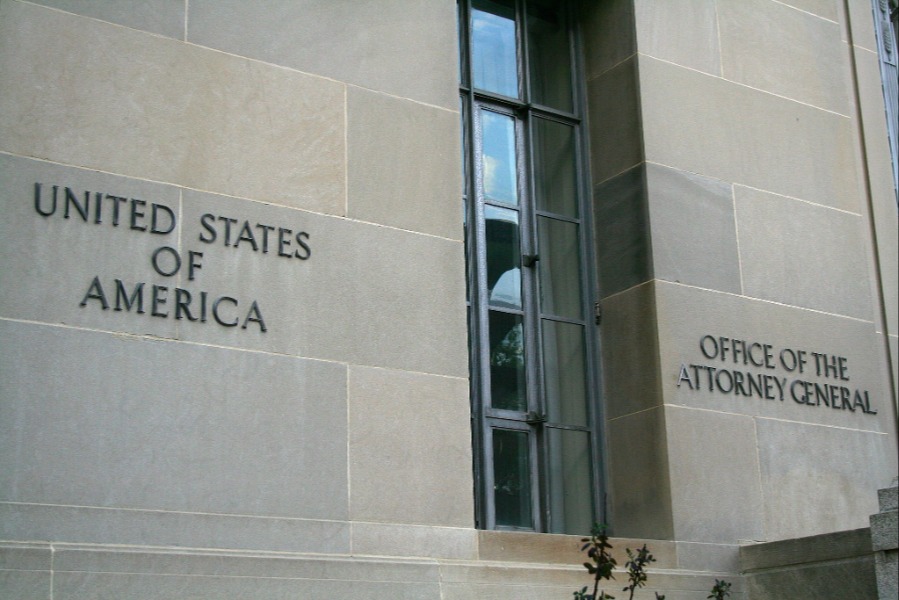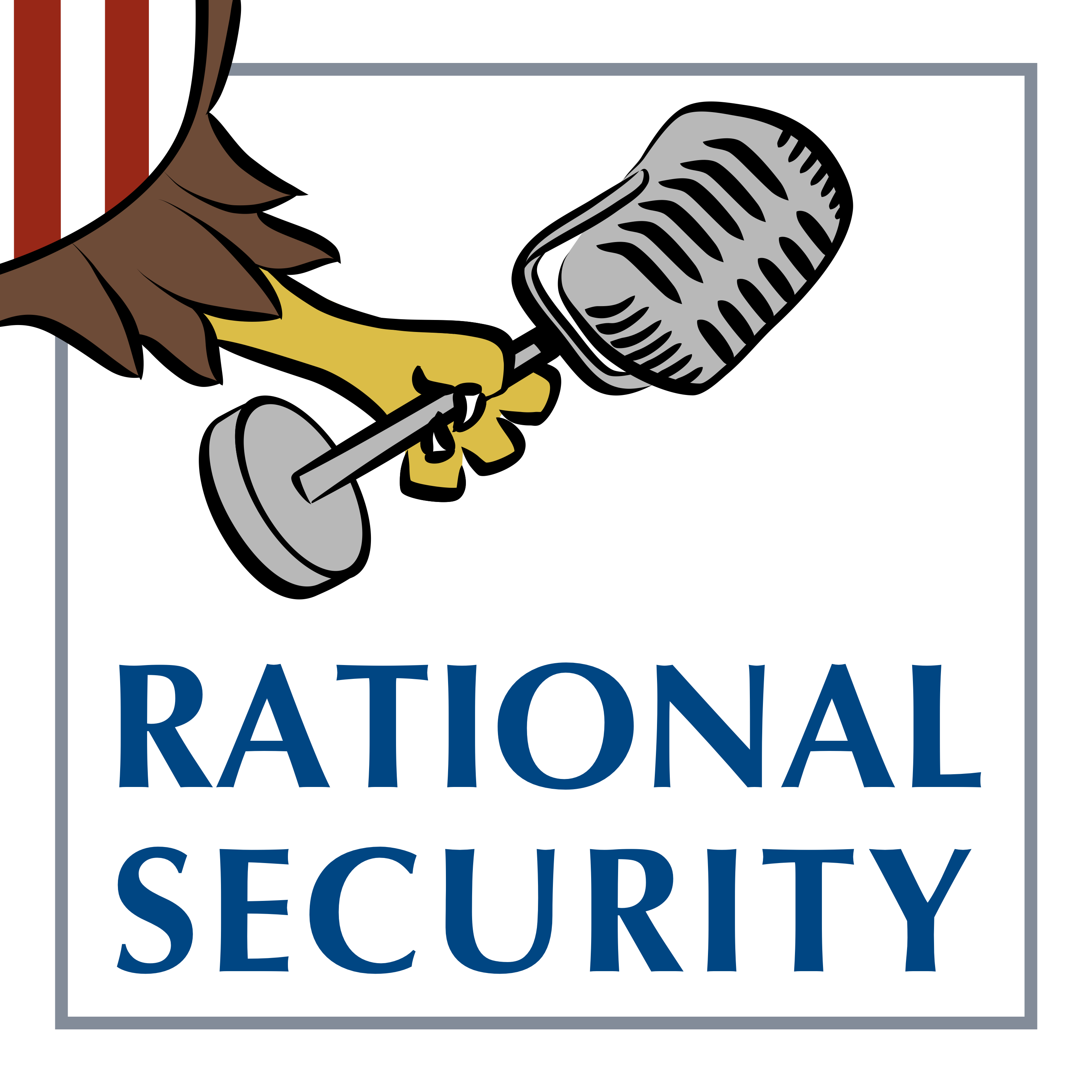The President’s Favorite Decision: The Influence of Trump v. U.S. in Trump 2.0

Published by The Lawfare Institute
in Cooperation With

Editor's note: This piece is cross-posted with "Executive Functions."
The main critical reaction to the Supreme Court’s decision in Trump v. United States—both in the dissents in the case, and in public commentary—was that its shield of presidential immunity from criminal law portended a lawless presidency. In a lecture last Fall, I argued that the “decision’s main significance for the presidency” lies not in its holding about presidential immunity, but rather “in its expansive discussion of exclusive presidential powers, independent of the immunity ruling.”
The importance of Trump as an executive branch sword rather than a presidential immunity shield has come into clearer view with President Donald Trump’s early executive orders and actions, and with the actions of his senior subordinates. The Supreme Court’s broad holdings on the scope of exclusive presidential power vis-à-vis Congress underlie many of the Trump administration’s most controversial actions.
The conception of presidential power articulated in Trump was not entirely novel, but it went further on many dimensions, and in the aggregate, than prior decisions. The opinion was the latest in a line of cases that, taken to its logical extreme, constitutes a “maximalist theory of executive power” that exceeds even “the standard version of unitary-executive theory,” as Adrian Vermeule shrewdly observed soon after Trump was announced.
The Trump administration is relying on the maximalist implications of Trump. These implications, as Vermeule made clear, are not necessarily entailed by Trump or prior decisions. The analysis in Trump was pointed at a particular problem, presidential immunity, and was elusive and ambiguous in places. The final say on the decision’s meaning will, in theory, be decided by the Court. What follows is simply an effort to tie elements of the opinion to what is going on now inside the presidency.
Trump v. United States, in Brief
As everyone knows, Trump concerned Trump’s prosecution for allegedly conspiring to overturn the 2020 presidential election by spreading false claims of election fraud in order to obstruct the certification of the election results. Trump claimed absolute immunity from these charges. The Supreme Court held that a former president is (i) absolutely immune from post-presidency prosecution for presidential conduct that falls in his exclusive constitutional authority, and (ii) at least presumptively immune for other official presidential acts.
Underlying the first holding was a broad conception of exclusive presidential power vis-à-vis Congress—presidential power, that is, that Congress cannot criminalize or otherwise regulate. The Court invoked this conception of presidential power to rule unconstitutional the prosecution of Trump’s alleged efforts “to leverage the Justice Department’s power and authority”—including threats of firing the Acting Attorney General—“to convince certain States to replace their legitimate electors with Trump’s fraudulent slates of electors.” This ruling had several important dimensions, as explained below.
Exclusive Power Over Law Enforcement
Prior to Trump, the Court had ruled that the president’s Article II duty to “take Care that the Law be faithfully executed” is also the main source of presidential discretion whether and how to enforce civil and criminal law. The Court had also stated that “an extreme case of non-enforcement arguably could exceed the bounds of enforcement discretion.” Recent presidencies had tested this limit by exercising presidential discretion, often in light of ostensible resource constraints, to underenforce statutes to achieve policy aims that were in tension, if not at odds, with the statutes in question. The Obama administration’s policy of deferred action for unlawful immigrants with children in the United States is a famous, yet far from the only, example.
But as a general matter, it was thought to be off limits for the president to not enforce a federal law at all simply because he did not like the policy in the law. As the Court stated in 1838 in Kendall v. United States, the Take Care Clause does not give the president a “dispensing power” or “power to forbid [the laws’] execution,” which would, if accepted, “cloth[e] the President with a power entirely to control the legislation of congress, and paralyze the administration of justice.”
Against this background, the most surprising and consequential ruling in Trump is that “the president has exclusive authority over the investigative and prosecutorial functions of the Justice Department and its officials.” The Court applied this principle to deny Congress and the courts the power to stop the president from using DOJ law enforcement tools to achieve what would otherwise be a crime. The broader significance of the ruling is that the president has some degree of “discretion” (as Trump put it) to investigate and enforce criminal law, and probably civil law too, that neither Congress nor courts can touch. There is no obvious reason why this exclusive presidential power would not extend beyond the Justice Department to the president’s direction of all law-enforcement activities around the executive branch.
The ruling about the exclusivity of presidential enforcement discretion, especially vis-à-vis Congress, is entirely novel. (I do not have space to demonstrate the point here but will be posting an article on it soon). And it has potentially massive implications, depending on its scope. One concrete implication, at least as far as the Trump administration is concerned, can be seen in the Trump Tik Tok Executive Order (EO).
The Supreme Court upheld Congress’s ban on TikTok, which came into effect the day before Trump became president. On his first day in office, Trump issued an EO that instructed the attorney general to not enforce the act for 75 days so that Trump could assess the foreign policy implications of the ban and negotiate a workaround. The president also ordered the Attorney General to inform the private firms that “there has been no violation of the statute and that there is no liability for any conduct” in violation of the statute during the 75-day period (or after the effective date of the act and before the EO).
The TikTok EO appears to be an example of complete presidential non-enforcement of a law, for 75 days, simply because the president does not like the law. It is exactly what Kendall ruled out. Prior to Trump, such non-enforcement would almost certainly have been unlawful—as even staunch unitary executive branch defenders once argued. But Trump’s recognition of new space for exclusive presidential law enforcement discretion gives the EO at least a wobbly leg to stand on. If a lawsuit were brought to challenge the non-enforcement (which I doubt will happen), the Trump administration would rely heavily on Trump. I don’t think the Supreme Court will go for this extension of the decision, if it ever gets a chance to address the issue.
The Removal Power
Another important presidential power—based in part on the Take Care Clause and in part on “the executive Power” vested in the president—is the president’s power to fire executive officials at will. The Court in Seila Law had previously acknowledged “two exceptions to the President’s unrestricted removal power”—one for “multimember expert agencies that do not wield substantial executive power,” and one “for inferior officers with limited duties and no policymaking or administrative authority.”
These exceptions represent a contraction of limitations on the presidential removal power by the Roberts Court. Trump goes further. It described the removal power in broad terms and only grudgingly acknowledged the shrinking exceptions with a “cf.” citation to Seila Law. It also expanded the president’s removal power from prior baselines on two dimensions.
First, Trump extended it beyond its traditional domain of limiting Congress’s power to impose for-cause limits on presidential firings to denying Congress power to criminalize a president’s threatened use of removal of the Acting Attorney General to obstruct a congressional proceeding. The scope of this new form of presidential removal power is unclear.
Second, Trump put a stake in the holding of Morrison v. Olson, based in part on removal restrictions, that Congress can “reduce[] the amount of control or supervision that the Attorney General and, through him, the President exercises over the investigation and prosecution of a certain class of alleged criminal activity.” Trump clearly rejects this proposition in holding that the president has exclusive control vis-à-vis Congress over investigation and prosecution.
The Trump administration—doubtlessly fortified by Trump’s grudging reference to the Seila Law exceptions, by its expansion of the removal power on other dimensions, and by the broader trend in the case law—is exercising unprecedentedly sweeping removal powers.
The administration bumped up against the first Seila Law exception when it fired NLRB member Gwynne Wilcox. Federal law says that a president may remove an NLRB member “for neglect of duty or malfeasance in office, but for no other cause.” Trump fired her without claiming or showing any cause. Wilcox has sued, claiming that the firing is unlawful. The administration will undoubtedly argue that the NLRB exercises significant executive power and that in any event the main precedent in support of the first exception, Humphrey’s Executor, should be overruled. And it will cite Trump’s removal discussion, summarized above, in support.
The administration will seek to skirt or eliminate the second Seila Law exception when it invokes Article II backup for the firings of career officials in the Justice Department and FBI. It will, again, rely on a Trump-enhanced theory of executive branch removal power for support. It will also invoke Trump in arguing that, despite the second Seila Law exception, the president had the constitutional power to fire seventeen inspectors general in disregard of a statutory notice-with-reasons provision.
Trump will also shape the administration’s defense of statutory authority to remove civil service protections from career positions deemed to be “policy-influencing.” The “Federal Workforce” EO that seeks to do this begins: “Article II of the United States Constitution vests the President with the sole and exclusive authority over the executive branch, including the authority to manage the Federal workforce to ensure effective execution of Federal law.” That claim builds directly on Trump—specifically, on its articulation of a new exclusive core of presidential enforcement discretion combined with an enhanced removal power that has (as Trump confirmed) always been the basis for presidential management of the executive branch.
The “Maximalist” Theory of Executive Power
I have thus far analyzed the exclusive power rulings in Trump for their discrete influences. But as the constitutional claim in the Federal Workforce EO suggests, the decision’s full significance emerges not just from what it says about individual presidential powers, but from its overall vision of presidential power.
In a nutshell, that vision is expressed (with emphasis added) in a single sentence from Trump: “[U]nlike anyone else, the President is a branch of government, and the Constitution vests in him sweeping powers and duties.” Those sweeping powers, Trump explained, begin with the vesting of “the executive Power,” all of it, in the president. They include broadened enforcement discretion and a broadened removal power. And these powers in turn underlie the president’s broad powers to supervise and direct subordinate executive officials.
We do not have to speculate how this aggregate theory is influencing the Trump administration. Consider its bold impoundment claim—the idea that the president does not have to spend appropriated money even though the Impoundment Control Act of 1974 says he must. The Office of Management and Budget (OMB) is the institution that would implement a presidential impoundment power; it is also the crossroads for executive orders. Trump’s current General Counsel for OMB, Mark Paoletta, wrote in an essay last September that the “power of impoundment . . . stems from the President’s conclusive and preclusive authorities the Court sets out in the Trump v. United States opinion.”
Paoletta develops this claim at length in the essay but its essence comes in the second paragraph, which strings together seven passages from Trump, sometimes quoting the Constitution or earlier cases:
Article II of the “Constitution vests the entirety of the executive power in the President” of the United States. “This grant of authority establishes the President as the chief constitutional officer of the Executive Branch, entrusted with supervisory and policy responsibilities of utmost discretion and sensitivity.” “The President’s duties are of ‘unrivaled gravity and breadth.’” The President “must ‘take Care that the Laws be faithfully executed,’ and he bears responsibility for the actions of the many departments and agencies within the Executive Branch.” The President exercises many authorities that are derived “from the Constitution itself.” When he exercises such powers, his authority is “conclusive and preclusive,” meaning that “he may act even when the measures he takes are ‘incompatible with the expressed or implied will of Congress.’” “Congress cannot act on, and courts cannot examine, the President’s actions on subjects within his “conclusive and preclusive” constitutional authority.”
This is a muddled mishmash of Trump, as is the more detailed analysis later in the essay. It does not, to my mind, add up to a general power to defy a statute that commands the president, with specified exceptions, to spend appropriated money. But my mind is not what matters. The Trump administration’s mind is what matters right now, and it is plainly operating on the maximalist conception of Trump and the cases it built on.
Vermeule describes the essence of this conception as follows:
[W]hen subordinate executive officials, including administrative agencies, exercise delegated discretion under otherwise valid statutory grants of authority, they are exercising executive power; hence they exercise not their own power, but that of the President. There is no such thing as executive power given to subordinate officers or administrative agencies in their own right; there is only, ever, the executive power of the President, which alone incarnates and gives legal life to the legal authority of all his subordinates.
He then offers this analogy to Thomas Hobbes’ Leviathan:
Leviathan is itself composed of many smaller bodies; by the same token, it encompasses and includes them. The citizens are contained within Leviathan, as it were, forming the body of the commonwealth. So too, by analogy (and putting firmly aside the question what use Hobbes himself intended to make of the image), the President as Leviathan encompasses all subordinate executive officials. The President is not only the head of the executive branch, but also its whole body; in contemplation of the law, there is no executive power that lies outside the Presidency. Of the President’s two bodies, his public and legal body subsumes the whole executive establishment, including each and every agency or official exercising executive power.

The frontispiece of “Leviathan” by Thomas Hobbes, image by Abraham Bosse, provided by the British Library (https://tinyurl.com/yazutbtd; CC0 1.0, https://creativecommons.org/publicdomain/zero/1.0/deed.en)
Trump 2.0 is using every tool at the president’s disposal—stringent loyalty pledges for new officials, maximum elimination of non-loyalists through legal and non-legal means, and legal directives that aim to clear away every practical barrier between the president’s will and executive branch action—to ensure that Trump’s “public and legal body subsumes the whole executive establishment.” As Trump said: The President is a branch of government.
Conclusion
One can imagine the joy with which Trump’s senior legal and political advisors read Trump v. United States on July 1, 2024. They were joyful because the Court recognized a presidential immunity that would make it practically impossible to try Trump criminally before the election. But they were surely also joyful because the decision tended toward an aggregate conception of executive power that was already embodied in Project 2025, and that they planned to deploy to overcome, and to obliterate, the resistance that they believed, with justification, sought to stymie Trump’s first term.
The maximalist theory of executive power extends far beyond what I have described above. It includes, for example, Attorney General Bondi’s insistence that Justice Department attorneys are “his [i.e., President Trump’s] lawyers” and the administration’s express recognition that the President and senior White House officials can communicate directly with the Justice Department about ongoing investigations and cases. It also includes, as Vermeule says, the views that all congressional delegations of power to executive branch officials, including adjudicatory power, are in reality “delegations to the President,” and that “subordinate officers enjoy the President’s own immunity from civil and criminal process.”
I doubt that most of what is unfolding now, or will continue to unfold for a while, is what Chief Justice Roberts, the author of Trump, had in mind. The Chief is a Reagan-era unitarian and has been the intellectual leader on the Court in expanding the president’s removal power. But does he admire the maximalist interpretation of Trump and its predecessors that has spawned executive branch chaos and inattention to legal constraints?
We will find out. As noted at the outset, the maximalist theory is far from necessarily entailed by Trump. And the Supreme Court will have the final say on the meaning of Trump—assuming that is, that the Trump administration appeals its lower court losses and complies with Supreme Court judgments. I’ll leave that issue for another day.




